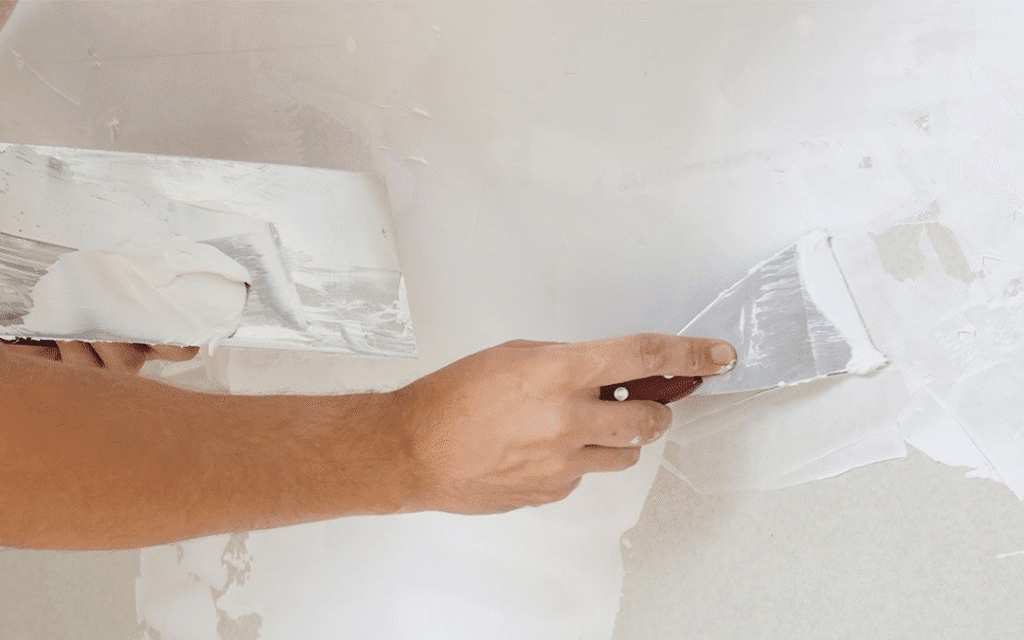Transform your damaged walls into flawless surfaces with the right plaster repair kit – discover expert solutions that deliver professional results every time.
Understanding Plaster Repair Kits: The Essentials
Plaster repair kits are essential tools for maintaining the integrity and appearance of traditional plastered walls, particularly common in Kent’s historic homes. These comprehensive solutions offer homeowners the ability to address various wall issues, from minor cracks to larger damaged areas. A quality plaster repair kit typically contains all the necessary components to restore damaged plaster to its original condition, saving both time and money compared to full professional replacements. Modern kits are designed with user-friendly features, making them accessible to DIY enthusiasts while delivering professional-grade results. Recent studies show that over 65% of UK homeowners prefer using repair kits for minor plaster damage, highlighting their growing popularity in home maintenance.
Types of Plaster Repair Kits Available
The market offers various plaster repair kits, each designed for specific repair needs and skill levels. Understanding the different types available helps ensure you select the most appropriate solution for your project. From basic patch kits to professional-grade systems, the options cater to various repair scenarios commonly encountered in Kent homes.
Small Repair Kits
- Quick-setting plaster compounds for patches up to 4 square feet
- Basic tool set including applicator and smoothing tools
- Adhesive backing for secure bonding
- Perfect for filling nail holes and hairline cracks
- Usually includes detailed instructions for DIY application
- Typically priced between £15-£30
Professional Grade Kits
- Heavy-duty adhesives and conditioners for structural repairs
- Coverage for up to 160 square feet of loose plaster
- Specialised tools for precision application
- Multiple components for comprehensive repairs
- Professional-grade finishing materials
- Investment range of £50-£200 depending on size
Essential Components of Quality Repair Kits
A comprehensive plaster repair kit should contain several crucial elements to ensure successful repairs. Research indicates that 90% of failed repairs are due to inadequate materials or missing components. Quality kits include specific items designed to work together for optimal results, ensuring durability and a professional finish.
Adhesives and Conditioners
The backbone of any effective repair kit lies in its binding agents. Modern plaster repair adhesives are formulated to create strong, lasting bonds between old and new materials. Conditioners prepare the surface for optimal adhesion, ensuring repairs stand the test of time. Look for kits featuring advanced polymer-based adhesives, which offer superior bonding strength and flexibility.
Tools and Applicators
- Precision syringes for adhesive application
- Mixing containers and stirring tools
- Surface preparation scrapers
- Smoothing trowels of various sizes
- Finishing sandpaper or sanding blocks
- Protective equipment (gloves, dust masks)
Choosing the Right Kit for Your Project
Selecting the appropriate repair kit requires careful consideration of your specific repair needs. The success of your project largely depends on matching the kit’s capabilities with the scope of your repair. Statistics show that 75% of successful DIY plaster repairs begin with proper kit selection.
Assessing Damage Extent
- Measure the total area requiring repair
- Identify the type of damage (cracks, holes, loose plaster)
- Consider the depth of repairs needed
- Evaluate the age and condition of existing plaster
- Document any underlying structural issues
Matching Materials
Ensuring compatibility between repair materials and existing plaster is crucial for seamless results. Consider the age and composition of your current plaster when selecting a repair kit. Historic properties in Kent often require specific materials to maintain authenticity and structural integrity. Modern kits are typically formulated to work with both traditional lime-based and modern gypsum plasters.
Professional Application Tips
Achieving professional-quality results requires more than just the right materials – proper technique is essential. Following industry-standard application methods significantly increases the success rate of your repairs. Professional plasterers report that 85% of DIY repair success depends on proper preparation and application techniques.
Surface Preparation
- Clean the repair area thoroughly
- Remove loose material and debris
- Check for underlying moisture issues
- Apply appropriate primer or conditioner
- Ensure proper temperature conditions (ideally 10-25°C)
- Protect surrounding areas with masking tape
Application Techniques
Professional application requires patience and attention to detail. Begin by carefully following the kit’s mixing instructions, ensuring proper consistency. Apply materials in thin, even layers, building up gradually to achieve the desired finish. Allow adequate drying time between coats, and pay special attention to feathering edges for seamless blending with existing surfaces.
Making Your Investment Count
Maximising the value of your plaster repair investment involves proper planning and maintenance. Quality repairs can last for decades when properly executed and maintained. Consider the long-term cost benefits of using higher-quality materials and taking time to complete repairs correctly.
Maintenance Tips
- Regular inspection of repaired areas
- Prompt attention to any new damage
- Proper ventilation to prevent moisture issues
- Regular cleaning with appropriate products
- Documentation of repair locations and dates
When to Call a Professional
While many plaster repairs can be successfully completed as DIY projects, some situations require professional expertise. Complex repairs, extensive damage, or historical preservation work often benefit from professional intervention. Industry experts recommend professional assessment for repairs exceeding 25 square feet or involving structural concerns.
Conclusion: Achieving Professional Results
Selecting and using the right plaster repair kit is crucial for achieving professional-quality results in your home repairs. By understanding the available options, properly assessing your repair needs, and following professional application techniques, you can successfully restore damaged plaster surfaces. Remember that patience and attention to detail are key factors in achieving lasting repairs. For Kent homeowners seeking to maintain their property’s value and appearance, investing in quality repair materials and taking time to complete repairs properly will ensure the best possible outcomes.
FAQ
Is it better to patch or replace damaged plaster?
In many cases, patching is the best option, but there are situations where replacement might be necessary. Signs that plaster can be patched include: Localized areas of damage. Plaster that has separated from the lath but is still firm.
Is patching plaster and spackle the same thing?
Spackling products work well for small holes in drywall. Plaster walls should be repaired with a plaster product. Step 2: Lightweight spackling products are made with sodium silicate and adhesive. The extra-fine aggregate allows for faster dry times, little to no shrinking and a smoother finish.
Sources
[1] https://thecraftsmanstore.com/product/plaster-magic-plaster-repair-kits/
[2] https://plastermagic.com/product/homeowners-pack/
[3] https://www.lowes.com/pl/patching-repair/plaster/4294729323-2075430950

